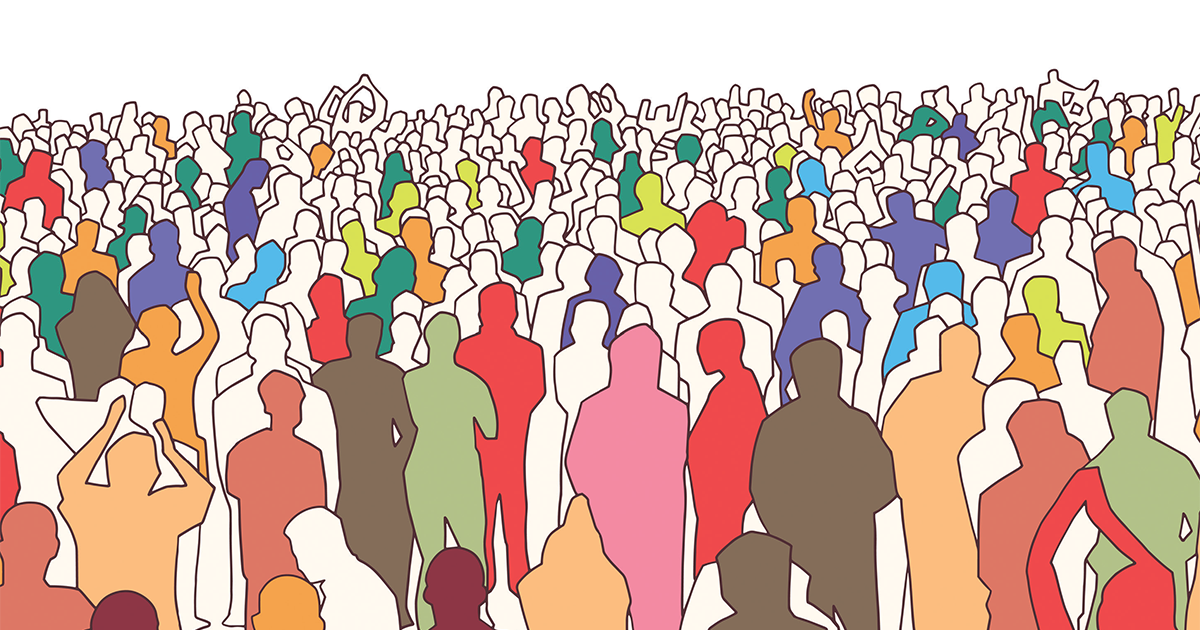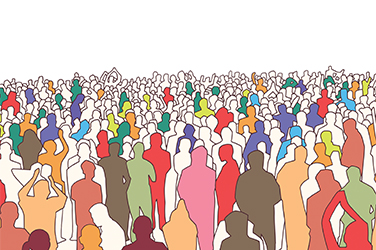
- Free Article: No
- Contents Category: Commentary
- Custom Article Title: Till ‘real voices’ wake us, and we drown: The mire of identity politics
- Review Article: Yes
- Article Title: Till ‘real voices’ wake us, and we drown
- Article Subtitle: The mire of identity politics
- Online Only: No
- Custom Highlight Text:
We can learn much about a culture by listening to how it talks about its art. The way non-white writers, for want of a better phrase, tend to be reviewed in Australia tells us a lot about how we determine cultural value. Some reviewers place a premium on the author’s biography – her identity – rather than on her work itself. The reviewer avoids critical engagement with the text in favour of a kind of reverential praise of its political messaging.
- Article Hero Image (920px wide):

- Featured Image (400px * 250px):

- Alt Tag (Featured Image): 'Till "real voices" wake us, and we drown: The mire of identity politics' by Mindy Gill
I read because I want to make sense of life, especially the elements that are unfathomable or even repulsive to me. But it seems we no longer speak of literature as if it were mimetic of real life but rather as if it were real life itself. I have trouble with fiction’s supposed power to ‘cause harm’. The concept has become gospel, and to treat it for what it is – pure cant – is now something akin to blasphemy. My brain prefers detail to the ‘bigger picture’. Essays make me feel apprehensive; I tend to lose myself in the process of arranging my sentences into an elegant paragraph that embodies a convincing argument. Still, I am confident about the words I choose, because I take comfort in their nuance and embrace the differences in their meaning. ‘Harm’ is not a synonym for ‘hurt’, just as ‘fear’ is not a synonym for ‘danger’. This is not to say that the brain doesn’t respond to fear as acutely as it does to danger, or that our instinct isn’t to perceive them as equal threats. What troubles me is the fact that we’ve begun expecting from literature something it cannot deliver: staunch fidelity to whatever dogma it is we believe in. If it does not provide us with this superficial ideological kinship, we tend to dismiss it as unsuccessful or irrelevant.
Joan Didion once said that ‘fiction is always hostile to ideology’. Writing in 1972, she stated that it has ‘certain irreducible ambiguities’. Dogma is antithetical to the very idea of ambiguity – this is a straightforward concept, but the idea, when applied to literature, becomes somehow explosive. If her essay were published today, Didion would surely be diagnosed as a woman with a case of internalised misogyny. She slates the mainstream women’s movement for its tunnel vision and for what, to her mind, is an obvious case of confusing the aesthetic gesture with systemic change. Had her essay been written today, it would probably not be published at all, for the method of reading that Didion cautions against has become the primary way we are now exhorted to think about books. Not only have we learned to read with a preconceived framework, but we also seem to expect literature to be written with an explicit ideology or politics in mind. The veil between art and life thins, and a novel with a racist or sexist protagonist becomes an endorsement of racism or sexism by its author, never mind that the said protagonist is a fiction, nor that the character’s ethical flaws may function exactly to interrogate and criticise the belief system behind such behaviour. It is, of course, always possible that the author’s attempt will fail, that her portrayal is unconvincing and she regurgitates grotesque stereotypes – at which point the appropriate criticism can and should be levelled at the work. But it is detrimental for any reader to stymie their capacity for thinking at the initial moment of emotional response, and unconstructive to condemn the writing and its author on the basis of a moral rather than aesthetic deficiency.
To consider this phenomenon of privileging ideology and politics – or at least the performance of ideology and politics – above the artist’s own intentions, I’m going to look at the kind of language used to talk about books by non-white writers in Australia, for the criterion for evaluation differs when it comes to authors of colour. I wonder if, by examining the language that appears so often in these reviews, it may be possible to unpick the logic underpinning these forms of evaluation.
Australian literary culture seems to value an idea of authenticity in poetry and fiction that I rarely see upheld anywhere other than in memoir and autobiography. The view is that these works form their own sub-species of life writing. They are read as thinly veiled memoir where ‘speaking the truth’ is paramount, and where social or political intimations are never obscured by literary artifice. Andrew Fuhrmann reviewed Ellen van Neerven’s poetry collection Throat (UQP, 2020) in The Monthly (May 2020). He began with an odd disclaimer: ‘This volume is beyond my reach as a critic.’ Fuhrmann politely disengaged from the poems at the outset, citing ‘their manifest sincerity’.
The verse has a compelling prosaic clarity that conveys a sense of immediacy and earnestness, but more intensive poetic transfigurations are rare in the volume.
This appears to be quite deliberate […] It is about defying the silencing of Indigenous queer and gender non-conforming identities.
Fuhrmann identified the effect of authenticity as being connected to the perceived accessibility of a work, where rejecting poetic technique becomes an act of defiance in itself. When a culture becomes suspicious of literary style and assesses a work on the basis of how well the author ‘tells the truth’, it’s clear there has been a seismic shift in how we think about literature and its function. The purpose of writing, it seems, is to ‘elevate’ or ‘give voice to’ the stories of marginalised groups. But elevate to what, and from where, and according to whose standards? While writers of colour can, and of course do, focus on themes of cultural identity, racism, and trauma in their work, I’m concerned by moments when these themes become the sole focus of the critic – and the writer too. This is a form of appraisal that believes in the idea of such a thing as a ‘real voice’. Since they often aren’t white voices, underpinning the idea of the ‘real’ is the assumption – or expectation – that when a writer eschews literary technique and style, he or she is also rejecting the Western literary tradition. Australian literary culture has come to equate the rejection of literary craft and artifice with a progressive literary voice.
In his review, Fuhrmann goes on to say that Throat ‘demands to be acknowledged on its own terms, and in its own terms, from within its own or allied communities of discourse’. Fuhrmann is right to admit, however courteously, that there’s a largely unspoken rule that Indigenous writers and other writers of colour should not be criticised at all. However, the same rule applies especially to those from within the ‘allied communities of discourse’ – which I can only take to mean ‘people who aren’t white either’. When non-white critics (this one included) choose to engage with a non-white piece of writing as rigorously as they would any other, and when it involves negative criticism, they are derided as competitive, self-hating, and as performing for the ‘white gaze’. In short, they’re no longer being a ‘good’ person of colour. This is uncomfortably close to the idea of the ‘good migrant’, except that this time – if we continue thinking in separatist terms – the mandate is now coming from the inside. But to think that a negative review of a book by a writer of colour means that the criticism is directed towards the author’s cultural identity, rather than their work, feels less like ‘lateral violence’ (the term co-opted to describe this practice), and more like a Freudian projection.
I fail to see how attention to literary style – transmuting one’s subject matter into a particular form or voice – can possibly be interpreted as colonial complicity. Although certain literary styles have been developed within the Western canon, surely it’s a mistake for readers, writers, and critics alike to treat the freedom literary innovation offers as a club with conditional entry. This is akin to insisting that there are such categories as ‘white writing’ and ‘other writing’.
In a review of the anthology Solid Air: Australian and New Zealand spoken word (UQP, 2019), edited by David Stavanger and Anne-Marie Te Whiu, Andy Jackson provides a neat example of this kind of critical thinking (Cordite, December 2019). He praises the anthology’s ‘resistance to colonialism – not only on the political and personal level, but in the idea of what literature is and should be’. Although Jackson determines that ‘this is not an anthology of “identity politics”’, the final line of his piece reads: ‘Perhaps what is happening recently has been the expansion of which identities are affirmed, which aesthetics are given attention.’ I can’t help but think that this kind of paternalistic assessment does a disservice to the authors under review. Rather than offering a robust and meaningful engagement with the text itself, such reviews – out of self-preservation, laziness, or deference – prefer to remain within the boundaries of what can and cannot be said about identitarian writing. But what remains unsaid when we invariably bestow praise upon a text, even when it’s beyond one’s ‘reach as a critic’, is that we’re continuing to judge the work on the basis of the author’s racial identity.
Returning to the idea that literary success is measured by fidelity to ‘real life’, it may be useful to analyse what happens when author and critic share a cultural identity. One might assume that the critic will be freed from engaging with the identitarian aspects of the text. Instead, they tend to focus on evaluating the accuracy of the representation of the said cultural group, much of their assessment hingeing on the portrayal of identity rather than on storytelling. This fascinates me because holding preconceived assumptions about a cultural group’s identity and its behaviours is exactly what racism does. That said, I also know the desire to ‘feel seen’, particularly when one is starved for representation, and when the only representation available to you has relied on discomfiting caricature. It’s complex territory when both racism and race-consciousness hold similar ideas of group identity. I’m not suggesting that we force ourselves to cease thinking in terms of groups entirely – it may not be psychologically possible – but it’s a useful observation to keep in mind, especially when talking about race and representation in literature and beyond.
In a review that appeared in this magazine of Alice Pung’s novel One Hundred Days (Black Inc., 2021), writer Yen-Rong Wong begins: ‘It’s difficult to describe what it’s like to be raised in a Chinese family, especially when you are surrounded by markers of Western society.’ Later she writes: ‘Given my experiences, it is a relief to see aspects of these filial relations treated with such depth, care, and cultural consideration.’ It is the reader’s prerogative – and one of the pleasures of reading – to use one’s own life as a measure for engaging with fiction. But this is not the role of the critic. The most meaningful criticism is seldom centred on the reviewer’s own personal experiences – it results in the kind of literary assessment that serves the critic rather than the author or the writing. This form of critical engagement is just another consequence of the premium the literary culture places on identity. The reviewer is lured into the trap. On the complex mother–daughter relationships that Pung explores in her novel, Wong writes: ‘she can still tell when her mother is proud of her, even if this is never expressed out loud. This description is revealing about what it is like to be a child in an Asian family.’ It’s startling when such generalisations, which only reinforce homogenised assumptions, are accepted as valid criticism. Then again, perhaps it makes complete sense in a literary culture that defines literary success by how accurately a work meets one’s expectations of a cultural stereotype. Wong likely intended to relate Pung’s passage to her own childhood experiences – and this is precisely why I’m so insistent on attention to language. Wong’s phrasing encourages the reader to accept the antiquated, and genuinely colonial, view that a continent-spanning ‘Asian experience’ is possible.
This strange feedback loop reflects the new sensitivity in our thinking about race – which should only be a good thing. However wary I might be of this new identitarian literary culture, I know it isn’t productive to rage against the inevitable. I can resist it, personally, as both a writer and a critic, but I find it more instructive to observe it. From the outside, it appears as though we’ve never handled race with more care or consideration. But it’s always easier to broadcast our political ideals than to enact or live up to them. The reality of Australian literary culture is perhaps more like that week in 2020 when we feverishly flooded social media with images of black squares, drowning out genuine Black Lives Matter resources. I can’t explain why we offer one another these perfunctory gestures of solidarity, at no personal cost, and tell ourselves that we’re ‘doing the work’. I’m no sociologist. Perhaps it’s a narcissistic enterprise. Or perhaps, in a world tilting from its axis, clinging to our identities seems like the most reasonable thing to do.
This is the first in a monthly series of politics columns generously supported by the Judith Neilson Institute for Journalism and Ideas.




Comments powered by CComment